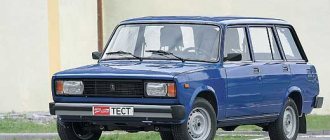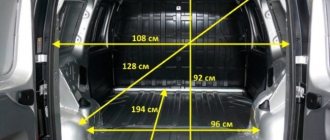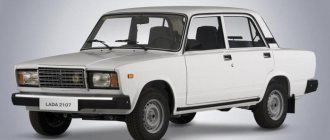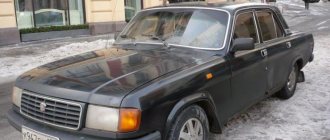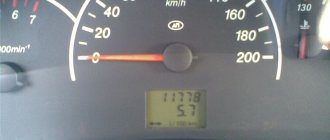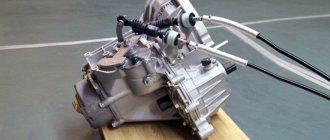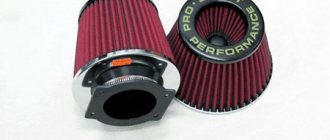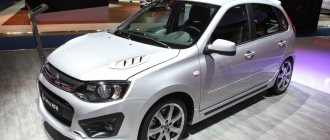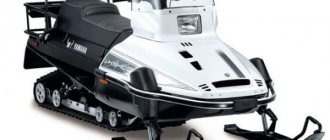Dimensions
Chassis
Fuel
Engine
The most common fuel tank sizes in cars are 40, 50, 60 and 70 liters.
Judging by the volume of the tank, you can tell how big the car is. In the case of a 30 liter tank, we are most likely talking about a small car. 50-60 liters is a sign of a strong middle peasant. And 70 indicates a full-size car. The volume of the fuel tank would be a useless quantity if it were not for fuel consumption. Knowing the average fuel consumption, you can easily calculate how many kilometers a full tank of fuel will last you. On-board computers of modern cars are able to quickly show this information to the driver.
The fuel tank volume of the Lada 2115 Samara is 43 liters.
Detailed technical characteristics of VAZ 2115 (Lada (VAZ) Samara) 21150 1.5 MT (68 hp). Description, prices and photos of VAZ 2115. Years of production: 1998, 1999, 2000.
Select the model and modification below:
Dimensions and volumes
Owner reviews:
VAZ 2115 configurations
This popular descendant of the VAZ 21099, a prominent representative of the Samara-2 family, is a compact B class sedan.
Produced from 1997 to 2012 in three main trim levels:
- “Standard” VAZ 21150-20-ST;
- “Norma” VAZ 21150-21-NR;
- "Lux" VAZ 21150-22-LX.
The 20-ST package did not include any additional elements or options other than standard seat belts and electric door locks. The interior is without any special decorative details, with tweed seat upholstery and solid fabric inserts on the side panels.
With the advent of the “21–NR” (standard) configuration, the car was equipped with fog lights, seat belt warning lights and heated front seats. The electrical equipment was supplemented with front door window lifts.
The most equipped car was the Luxury class car (22-LX). In addition to everything that was in previous trim levels, buyers now have a choice of interior trims. The seat upholstery was made not only of tweed material, but also of velvet.
The level of car safety has increased thanks to the built-in ABS (anti-lock braking system). Installing power steering made the car easy to control and maneuverable.
In addition there were:
- rear side window lifts;
- heated rear seats;
- headlight cleaners;
- factory tinted windows.
History of the VAZ concern
VAZ was founded back in 1966 to produce passenger cars aimed exclusively at the domestic market of the USSR. The first plant opened in Tolyatti, and Fiat representatives supervised this process. For this reason, the first cars were almost exact copies of previously produced Italian passenger cars with some technical changes made. Until 1971, only 100 thousand cars based on the Fiat-124 were produced. These were the so-called “Kopeykas”, VAZ-2101.
Since 1971, the plant has been undergoing a major restructuring, with several additional concerns opening directly on the territory of the USSR. At the same time, the development of all subsequent VAZ models up to 21099 (“Sputnik”) began. A new restructuring was undertaken after the collapse of the USSR. The plant needed massive financing, and car sales fell to almost 12% of previous turnover.
Until 1995, the plant produced only those car models that were developed earlier by Soviet engineers. The concern at that time belonged entirely to the state. Officials were well aware that the vehicles being produced a priori could not compete with Western ones, so they directed investments towards the development of new models. This is how the VAZ-2110 appeared. By the way, it was developed by the same workers as the previous one. VAZ-21099. For this reason, they have so much in common in schematics and mechanics.
Differences between the model and its predecessors
It is worth noting that this car has undergone the most significant changes in comparison with previous representatives of the line. The car body was completely modernized: it acquired smoother contours and became 22 centimeters longer.
The front of the car acquired original narrow headlights, the shape of the hood and front fenders changed. The bumpers took on modern shapes and began to be painted in body color, and additional brake lights appeared on the rear spoiler. The rear lights were supplemented with intermediate inserts, which increased the attractiveness of the rear of the car.
The trunk volume and carrying capacity of the vehicle have increased. The interior of the car has also changed, which is complemented by an updated dashboard and improved seats. The built-in steering column adjuster lever, which made it possible to set the optimal position of the steering wheel for drivers of different builds, also speaks in favor of the model.
Exterior design
Lada Samara-2 was produced exclusively in a sedan body. The car inherited its design from previous models, but thanks to the use of modern body elements, it has changed significantly. Many car owners use tuning to improve the external and internal appearance of their pet.
One of the possible interior tuning options.
Links
LADA Samara (Sputnik) family VAZ-2108 • VAZ-2109 • VAZ-21099 Lada 110 family VAZ-2110 • VAZ-21106 • VAZ-2111 • VAZ-2112 • VAZ-21123 Family LADA Samara 2
(“Eurosamara”)VAZ-2113 • VAZ-2114 • VAZ-2115 Lada Kalina family VAZ-1117 • VAZ-1118 • VAZ-1119 • VAZ-1119 Sport • Lada Kalina City Lada Kalina 2 family VAZ-2192 • VAZ-2194 Lada Priora family Lada Priora • VAZ-2171 • VAZ-2172 • VAZ-2172 Coupe Lada Granta family VAZ-2190 • VAZ-2191 Lada Largus family Lada R90 • Lada F90 Family on the LADA B/C Vesta Family based on the Renault-Nissan B0 Lada XRAY Minicars VAZ-1111 (“Oka”) • VAZ-1121 • “Gnome” • “Karat” • “Cheburashka” All-terrain Niva family (Lada 4×4) VAZ-2121 • VAZ-21213 • VAZ-2123 • VAZ-2131 • VAZ-2329 • VAZ-1922 (“Bronto-Marsh”) Co-production vehicles Chevrolet Niva • Chevrolet Viva • Lada RF-90 • Nissan Almera • Datsun on-DO • Datsun mi-DO Other cars VAZ-1706 "Shuttle" • VAZ-2113F "Shuttle" • VIS-2348 • VIS 2346 • VAZ-2120 ("Nadezhda") Minivan • "Tarzan" • VIS-23481 • "Tarzan-2" • "Tarzan-3" • APAL-2154 “Stalker” Electric cars VAZ-2801 • VAZ-1801 “Pony” • VAZ-2802 • VAZ-2702 • VAZ-1111E • VAZ 1152 “Elf” • “Rapan” • Lada Golf • Lada Rickshaw • VAZ-10031 “Brontocar” • EL Lada Concept cars VAZ-2151 “Neoclassic” • Lada C Project • Lada C Concept • VAZ-2116 Prototypes VAZ E2121 • VAZ-2103 station wagon • VAZ-1120 Minivan • VAZ-2122 “River” Sports cars Lada-VFTS • Lada-EVA • Lada Revolution This is a preliminary article about cars. You can help the project by adding to it. : Incorrect or missing image To improve this article it is desirable: - Check the accuracy of the information provided in the article.
Salon
Compared to its predecessors, the car's interior has improved significantly. A modern, compact, streamlined control panel has appeared, its information content has increased (due to a larger number of indicators) and ergonomics. A more efficient cabin heater was installed.
Sound insulation rates have also become higher. Comfort has increased thanks to the installation of comfortable seats with headrests.
Comfort and safety
If we talk about the comfort of Russian cars, most drivers will say that this figure is quite low. Many car owners try to increase the level of comfort by changing the interior, tuning and replacing shock absorbers.
The factory version leaves much to be desired. A plus was the increased trunk volume of the VAZ 2115. Its increased capacity provides owners with comfort during long trips.
As for safety, this criterion is gradually becoming the main one for Russian buyers. Unlike modern models, the VAZ 2115 is not equipped with airbags, ABS and other electronics.
Motorists who have crash tested this brand note unenviable results:
- During the frontal impact, the front part of the car was severely dented, right down to the front edge of the driver's door, which broke.
- The glass frame turned out to be inside out (the frame reinforcements were not strong enough).
This is not the entire list of possible damages. Therefore, it is not recommended to get into an accident while driving a car of this brand.
Watch the game crash test: what can happen in reality.
AvtoVAZ in the 2000s and later
Since the 2000s, sales of VAZ cars have been sharply declining due to the opening of foreign concerns that offered consumers more reliable and modern cars at relatively affordable prices. The management team again decides to update the model range. All subsequent cars did not gain popularity among potential consumers. The only exception is the VAZ-2114, which is still considered by many to be almost the best vehicle in the entire history of AvtoVAZ.
VAZ 2115: technical characteristics
The 15th model has been modernized more than once over the entire production period. From the beginning of 2000, it was produced as the VAZ 21150, the technical characteristics of which were much better.
Dimensional parameters.
| Body type | Sedan |
| Number of doors/seats | 4 / 5 |
| Length | 4330 mm |
| Width | 1620 mm |
| Height | 1415 mm |
| Wheelbase | 2460 mm |
| Front/rear track | 1400 / 1370 mm |
| Ground clearance | 160-170 mm |
| Trunk volume | 427 l |
| Curb weight | 970 kg |
| Permissible (gross) weight | 1395 kg |
| Volume of the tank | 43 l |
Engine
The predecessors were equipped with carburetor four-cylinder engines of 1.1 and 1.3 liters. But after 1999 they were written off, and the fifteenth model received a newer power unit. The VAZ 2111 came off the assembly line with a 1.5-liter engine equipped with distributed injection with a power of 77.8 liters. With.
Since 2007, VAZ 11183 began to be equipped with injection engines with a volume of 1.6 liters and a power of 80.9 liters. With. Structurally, they were practically no different from the previous version, only the piston stroke changed (from 71 to 75 mm), and the cylinders increased to 82 mm, which led to an increase in volume and power.
The installation of higher power engines made it possible to improve the parameters of the car. The maximum speed reached 170-180 km/h, but the acceleration time to 100 km/h changed little and amounted to 14 s. Average fuel consumption in city mode is 10 liters, but on the highway it does not exceed 5.7 liters.
Transmission and suspension
“Pyatnashka” is a front-wheel drive sedan with a standard five-speed manual transmission. The gearbox has one difficulty: first gear and reverse gear are engaged in the same way, which leads to unpleasant situations, especially when moving backwards.
The chassis is durable and resistant to poor quality road surfaces. This car has earned special love from car owners. The front suspension is a shock absorber strut, the rear suspension is a coil spring. The model is stable on the road, easy to control and unpretentious.
Steering and brake system
The steering has a rack and pinion mechanism and two rods, which have rubber-metal joints on the steering mechanism side and ball joints in the area of the swing arms. The standard steering wheel size is 37 cm (M). The basic configuration does not include an amplifier. The control of the “tag” is considered injury-proof (this is confirmed by motorists who have crash-tested the car) and convenient, thanks to the adjustable angle of the steering column.
The car's braking system is quite simple. The front wheels are equipped with disc mechanisms, and the rear wheels are equipped with drum mechanisms. A working system with diagonal separation of contours is used. One ensures the operation of the front left and rear right mechanisms. The hydraulic drive circuit is responsible for the operation of the opposite pair of brake elements. This ensures high driving safety.
If one circuit fails, the second will be used, which will ensure shutdown with sufficient efficiency. The handbrake has a drive to the brake mechanisms of the rear wheels. The luxury package was complemented by ABC.
Electrical equipment
In addition to the standard generator, battery and starter, cars of this brand in some trim levels were equipped with heated driver and passenger seats, as well as power windows on the front doors. Additional signaling devices (controllers) were built in to inform the driver about certain problems. All additional options could be installed only at the request of the buyer.
Malfunctions and repairs
All cars produced by AvtoVAZ have a number of design flaws that “come to light” during the operation of the car. So, it is worth understanding that these are not individual, but widespread problems associated with the design features of the VAZ 21150 engine:
- Triple effect. This can occur for a variety of reasons. So, this may be due to the formation of a fuel-air mixture, lack of spark, or errors in the electronic engine control unit. To solve this problem, you will have to conduct a comprehensive diagnosis of all systems.
- Overheat. A common problem on vehicles manufactured by AvtoVAZ. So, this may be due to a breakdown of the thermostat when it gets stuck, or a decrease in the coolant level. More than once, overheating of the motor has led to a major overhaul, since one or two such negative effects cause the head to bend.
- Floating speed. This is due to the fact that one of the sensors has failed, or the fuel-air mixture is not formed correctly. In this case, it is necessary to conduct computer diagnostics. But it is also worth paying attention to the condition of the piston group and valves. There may be burnout and wear.
- Bent valves. Since the VAZ 21150 does not have a chain, and the timing belt is driven by a belt, a break in the element can significantly damage the cylinder head.
- Metallic ringing. If a slight metal clinking sound appears under the hood, this means that the valves need to be adjusted. It is recommended to carry out this operation every 50,000 km. This is where another disadvantage comes to light - the lack of hydraulic compensators.
- Whistle when starting. This is the whistling sound of the alternator belt, which is worn out and stretched. Replacing the belt drive will help solve the problem with the unpleasant sound.
All of these faults are typical for this series of motors, so the owner should not worry - this is a design flaw.
Main competitors
The main competitors from domestic brands were Lada-Granta and VAZ 2111. The “Eleventh” model has a spacious interior and a large luggage compartment, which determined its advantage.
Reviews about the fifteenth model are mostly positive. Owners are satisfied with: stability on the road, ease of maintenance and a fairly low price. But the small interior is not very comfortable, especially for transporting passengers in the back seat.
The car is economical, comfortable, and stable on the road. Quite frisky. If you invest a little money in tuning, it will have no equal. It can even compete with the Priora, having less weight than it. The instrument panel is easy to read. The steering wheel turns easily. There was a desire to install an EUR, I went to the rocking chair - now I don’t need it. The trunk is roomy and the load capacity is excellent - I loaded it with 4 bags of cement, the mudguards were plowing, but I got there fine.
Oleg. Russia.
Are VAZs still produced today?
Do VAZ now produce cars under their main brand? As you know, after the global economic crisis, the company came under state control, as it owed its investors about 14.5 billion rubles. Officials decided to subsidize the concern and provide an interest-free loan of 60 billion (through Russian Technologies). At the moment, Renault owns 50% of the shares (minus 1 share). The remaining share is from Russian investors and Nissan.
